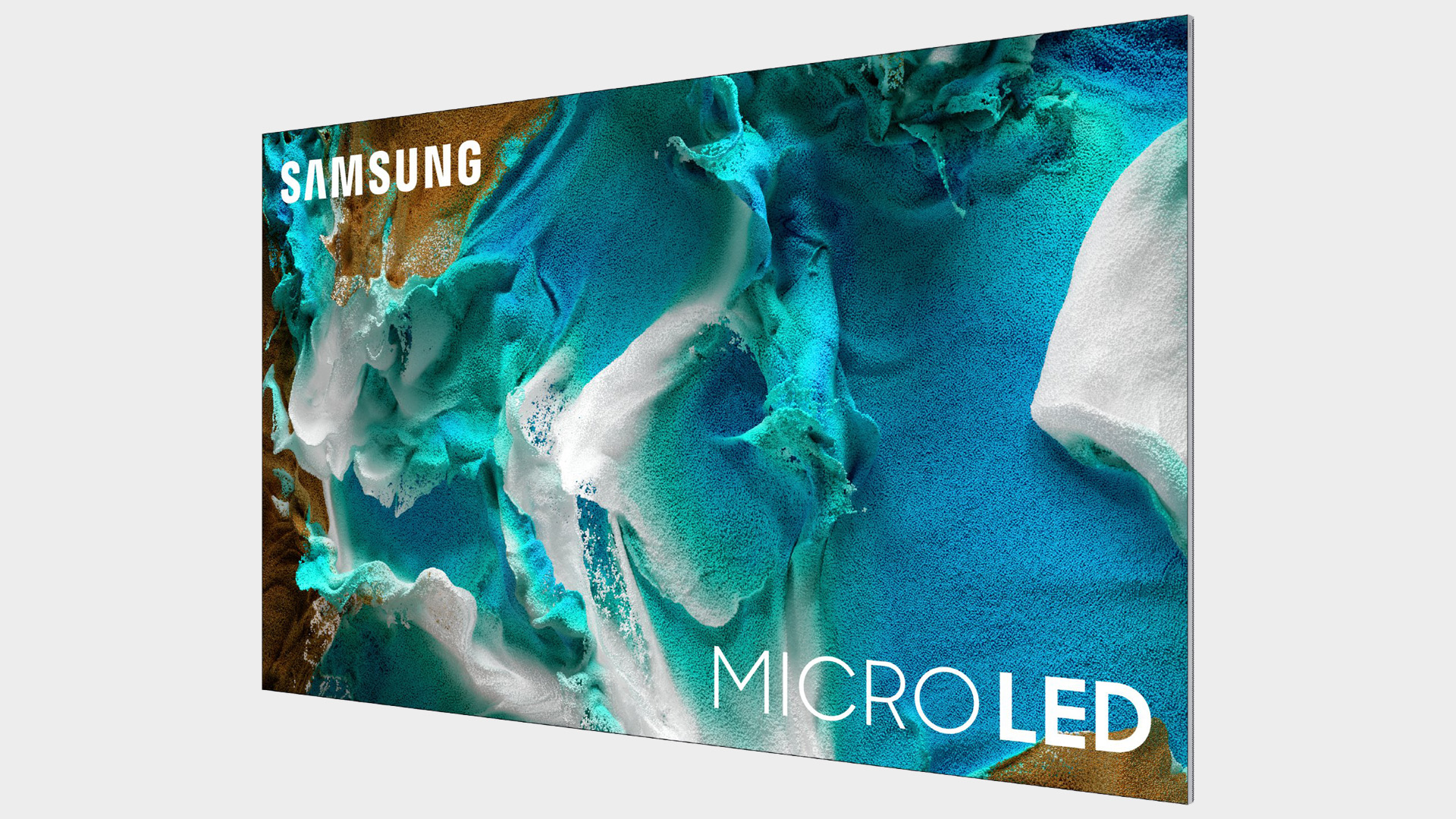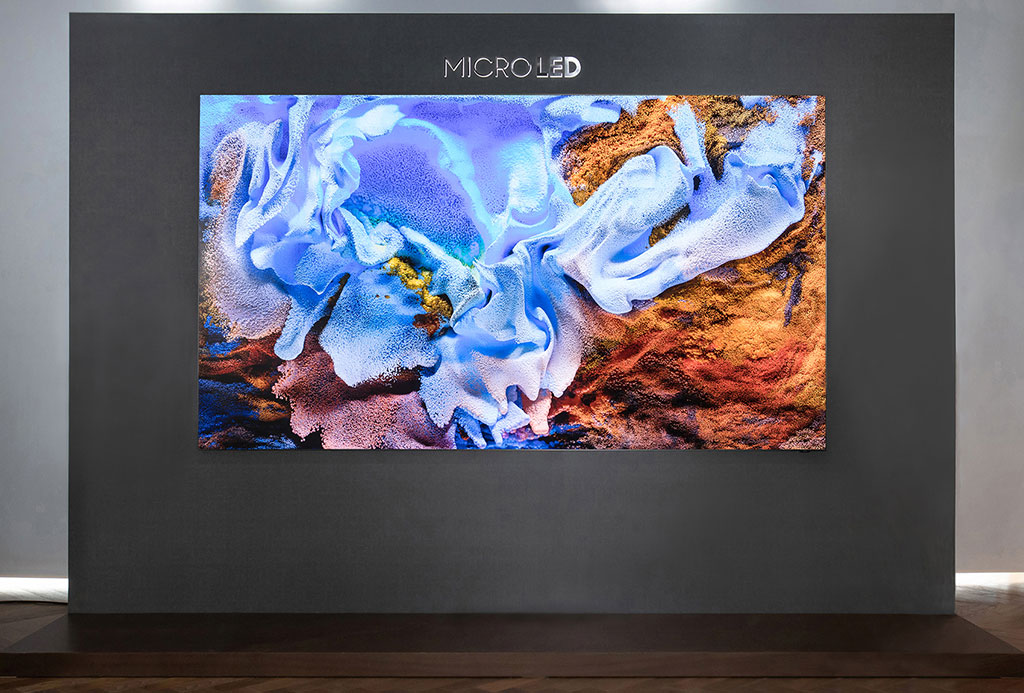MicroLED displays are heading for CES 2021, but not to your PC
Next-gen display tech still years away from the mainstream

Among the predictable hordes of LED-backlit and OLED displays at this year's virtual CES trade show, all the quantum this, neo that and 8K everything, will be a small but growing number of arguably more exciting displays based on microLED. Sony and Samsung are among the brands rolling out new microLED models at CES 2021. But us PC gamers can't get too excited.
MicroLED is the future. It will be awesome. But it's years away from appearing in your PC.
That’s a pity because microLED offers oh so much. Like OLED, it's a self-emissive technology, with each pixel being its own fully switchable light source. So, individual pixels can be turned fully off, generating both 'true' black tones and huge contrast.
But unlike OLED, microLED eschews organic compounds and doesn't suffer from permanent burn-in. That's a problem on OLED displays due to differential degradation within the RGB sub pixels. Long story short, the blue subpixels wear out faster than the red and green subpixels, leading to permanent image burn in. Yuck.
The Windows PC, with its persistent taskbar, menus, and screen furniture, is particularly prone to generating screen burn in OLED displays, which is one reason why OLED desktop desktop monitors are virtually non existent while OLED TVs are ever more commonplace and affordable.
MicroLED also has the advantage of supporting peak brightness across the entire panel, where OLED can only hit its full brightness in isolated patches of screen.
Anyway, Samsung's new "consumer" microLED TVs for CES 2021 represent a case in point that prove how far we are away from mainstream microLED screens, including PC monitors. In many ways, Samsung's new sets are more conventional screens than any previous microLED display. They have full feature sets including smart TV and audio capabilities, plus HDMI inputs and everything you need to plug in and watch content. But the 110-inch variant of the display announced late last year costs over $100,000.
The biggest gaming news, reviews and hardware deals
Keep up to date with the most important stories and the best deals, as picked by the PC Gamer team.


Best CPU for gaming: the top chips from Intel and AMD
Best graphics card: your perfect pixel-pusher awaits
Best SSD for gaming: get into the game ahead of the rest
Granted, Samsung will show slightly smaller offerings of the same new microLED product line at CES, all the way down to a paltry 88 inches, but you can still expect pricing well north of $50,000. Mainstream the new TVs most certainly ain't. As for Sony’s new microLED displays, they’re even bigger and pricier.
The reasons for the immense cost come down to a few factors. But one of the most intractable involves the current 'pick and place' manufacturing technique in which each LED has to be individually installed on the microLED backplane.
When you consider that a 4K screen has eight million pixels, each with three sub pixels, that’s a lot of little lights to install. One error and the whole panel is faulty. For now, microLED displays are usually made up of multiple modules, which helps alleviate the problem. A duff pixel means a dead module, rather than a whole display down the tubes. But yields are still very poor, driving up costs. The 'pick and place' process is also very time consuming, despite being done by machine, which only adds to the costs.
As it happens, 'pick and place' also puts a lower limit on pixel pitch. The individual LEDs can only be located so close to one another when being mounted individually. Consequently, Samsung’s 110-inch model is the smallest yet to offer full 4K.
In future, it’s hoped that inkjet-like printing processes can be used to manufacture microLED panels. But that, as we say, is currently a hope not a reality. Realistically, we’re at least five years away from even vaguely affordable microLED TVs. PC monitors are likely even further out.
In that context, mini-LED is probably as good as it's going to get for the PC in the next few years. That’s yet another respin of existing transmissive LCD tech, this time using backlight composed of an array of small LEDs, the idea being more precise control of lighting and contrast. Mini-LED will never match the dynamic range and precision of a truly self-emissive technology like microLED. But it’s as good as we’re likely to see on the PC for several years.

Jeremy has been writing about technology and PCs since the 90nm Netburst era (Google it!) and enjoys nothing more than a serious dissertation on the finer points of monitor input lag and overshoot followed by a forensic examination of advanced lithography. Or maybe he just likes machines that go “ping!” He also has a thing for tennis and cars.

